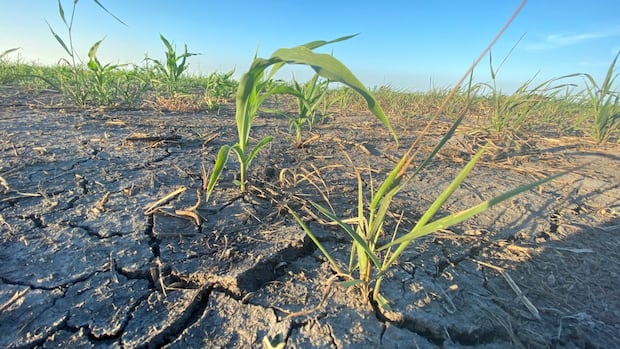[
The extremely dry conditions in Manitoba, which have led to multiple wildfires in the north, are now pushing other areas toward an agricultural calamity.
The rural municipality of St. Laurent has declared a state of emergency, while the RM of Coldwell has declared a state of agricultural disaster.
“In the RM of Coldwell, there’s a huge cattle industry, and right now … I would say that on average, the hay’s maybe 25 per cent of what they got last year, which is not very good,” said Reeve Virgil Johnson.
“Everybody’s hoping for rain, but we didn’t get any — nothing that’s really measurable.”
Many farmers use irrigation systems, relying heavily on dugouts with stored water, “but the dugouts are drying up,” Johnson said.
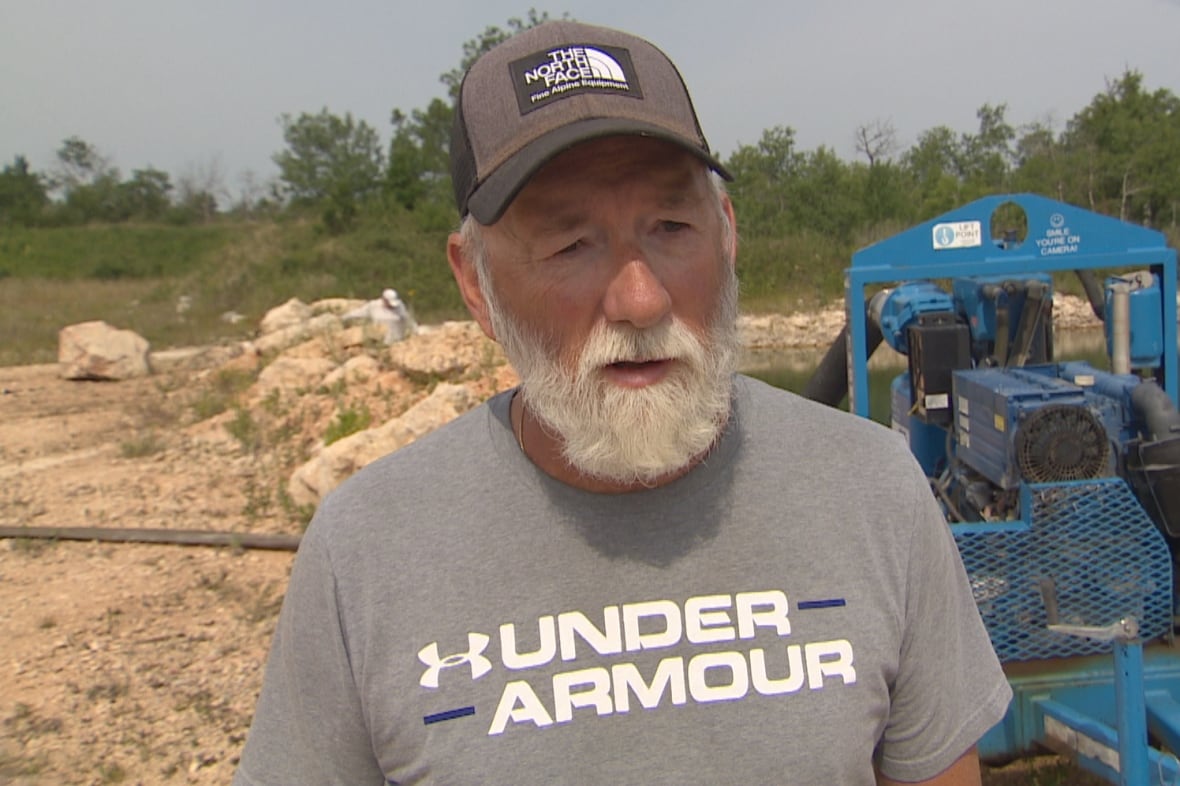
The situation is the same in St. Laurent, just south of Coldwell. Both municipalities are on the west side of Manitoba’s Interlake region, up against Lake Manitoba.
“We have had many farmers contact us. Their hay is dry and they need help,” said St. Laurent Reeve Richard Chartrand.
Agriculture and Agri-Food Canada said as of June 30, the Interlake is in a severe drought situation.
Johnson was in touch with Manitoba Agriculture Minister Ron Kostyshyn a couple of weeks ago, but since then, “it’s gotten worse.”
That prompted a meeting among administrators in the region and an agreement to publicly declare the urgent situations.
“We’re hoping with everybody doing that, it goes back to the government, and hopefully they can put out some programs for us and help the producers here in a meaningful way, whether that’s with feed or freight,” Johnson said.
“Once they see how many people are actually in trouble in the farming industry in the area — up and down No. 6 highway, it’s pretty dry, and surrounding areas as well — hopefully … it does put pressure on them.”
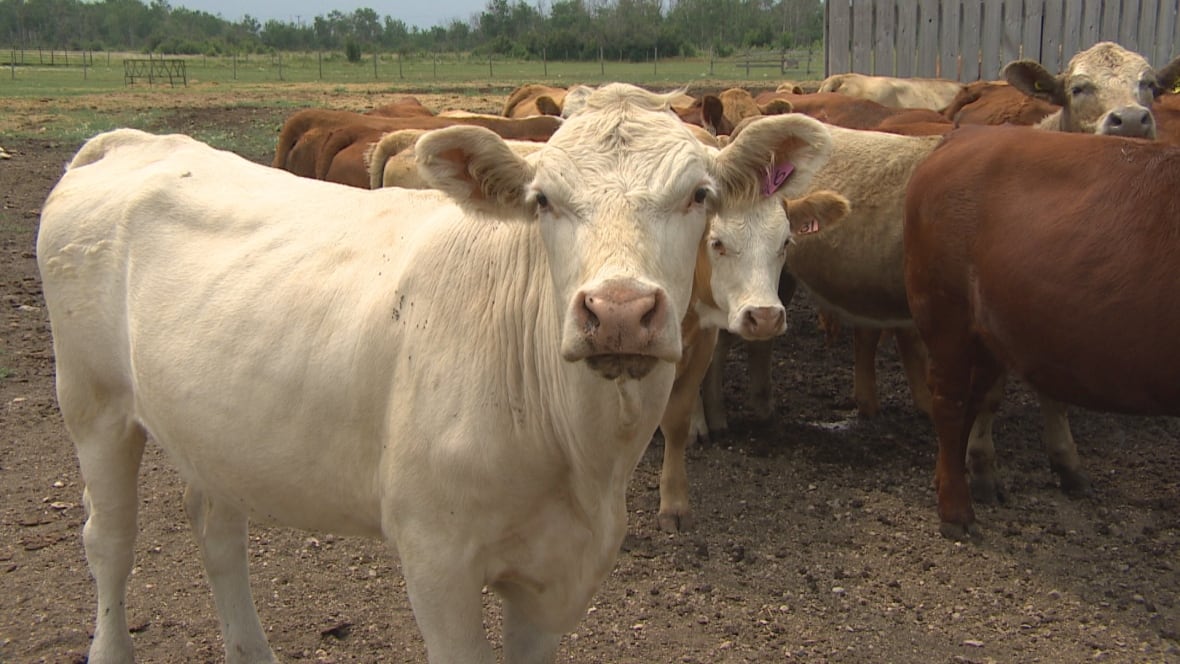
In a written statement to Radio-Canada and CBC, a spokesperson for Manitoba Agriculture said the province is in discussions with several farmers and municipal officials in the Interlake region.
“While we are closely monitoring the situation, we will continue to work with producers to help them address business challenges, including through existing business risk management programs. We remain committed to supporting farms in the Interlake region and across Manitoba,” the statement said.
Loni Jack, co-owner of Clegr Farms in Lake Francis, just south of the RM of St. Laurent, estimates she’ll get barely a third of the canola she had planned to harvest. The same goes for wheat.
“We were able to get our crops in but there hasn’t been any rain so the crops are not doing well at all,” she said. “It’s positive to have planted them, but if they’re not going to grow, we’re not going to make any money.”
To people passing by the farms while driving along the highway, some crops might look good, but they’re not, Johnson said.
“The heads just aren’t filling out that well,” he said, referring to the seed-bearing part of a crop, where the grains develop.
With nothing for cattle herds to eat, producers must transport their animals from pasture to pasture, “and it’s a big chore,” Johnson said.
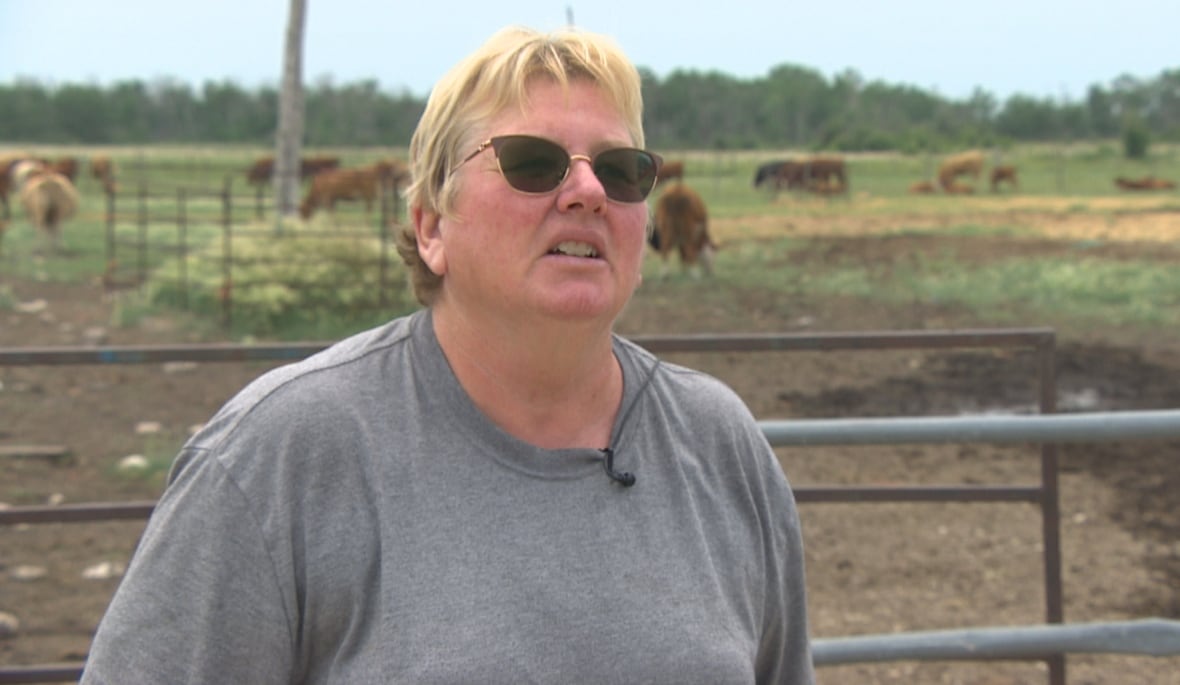
That’s exactly the situation facing cattle producer Dianne Riding, who said her farm has had less than 65 millimetres (2½ inches) of rain since the start of May. In a normal growing season, the west Interlake region gets around 200 millimetres, according to the province.
She’s had to move cattle around to different pastures far earlier than normal, she said. Typically, she doesn’t do that until September, because she wants them to stay in one general place to graze and gain weight.
She’s also had to bring her cattle into the farmyard to drink from big tanks that can be filled from wells.
“We would like them not to have to walk that far, but this is the best solution I have right now,” Riding said. “I need water for these cattle.”
Market uncertainty
Keystone Agricultural Producers vice-president Jake Ayer says farmers across the province are growing increasingly worried about the persistent dry conditions. On his farm near Minto, crop moisture levels range from around 30 to 70 per cent below average.
The federal government’s latest drought monitor says much of Manitoba got less than than 60 per cent of normal precipitation in June. It shows conditions in the province ranging from “abnormally dry” in the north to “severe drought” in parts of the south.
Ayer said cooler temperatures have helped some crops like canola, but the unpredictable weather is fuelling major uncertainty in the market.
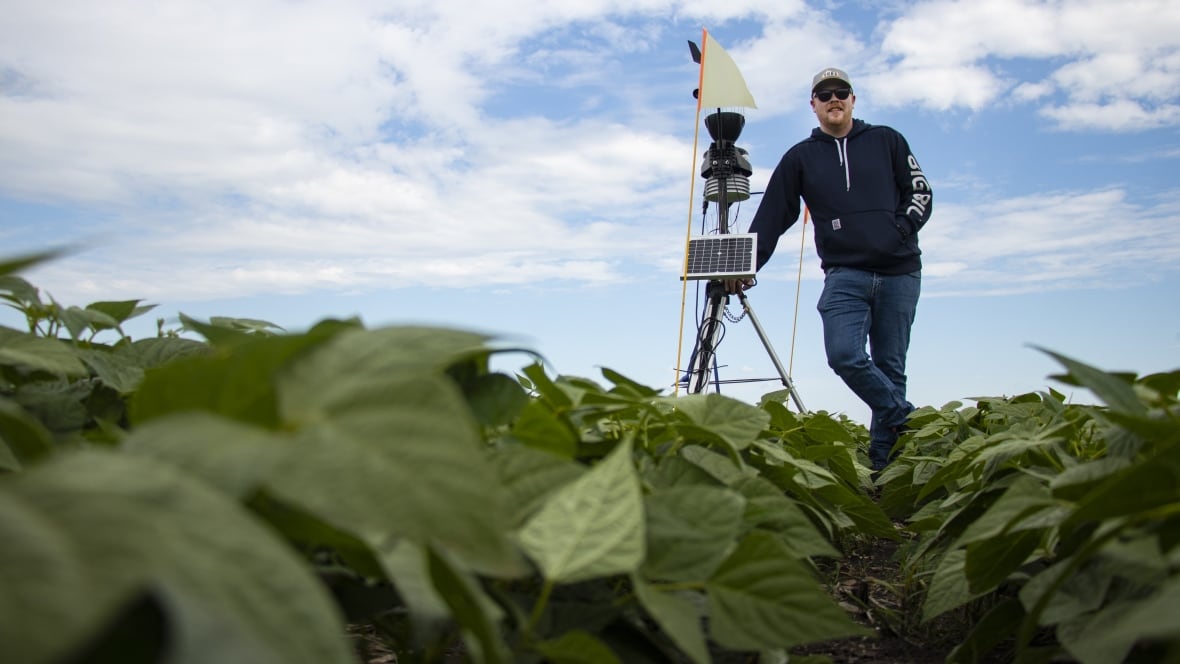
That makes cash flow the most pressing concern for many producers, he said. He said he’s seen an increase in the use of advance payment programs, like the Canadian Canola Growers Association’s cash advance.
“[There’s] more utilization of that program, so [payment on] either stored grain or in advance on the crop that they might harvest,” said Ayer.
For producers struggling with the pressure, support is available through the Manitoba Farm, Rural and Northern Support Services Hotline and the Manitoba Farmer Wellness Program.
